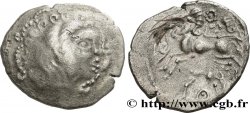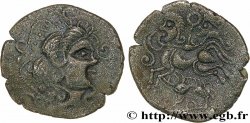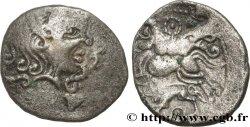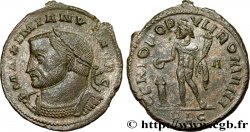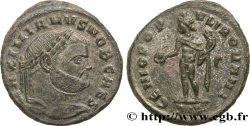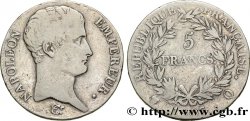v41_1583 - VENETI (Regione di Vannes) Quart de statère d'argent, classe I
MONNAIES 41 (2009)
Начальная цена : 450.00 €
Назначить цену : 900.00 €
Цена реализации : 530.00 €
Количество ставок : 4
Максимальная предлагаемая цена : 674.00 €
Начальная цена : 450.00 €
Назначить цену : 900.00 €
Цена реализации : 530.00 €
Количество ставок : 4
Максимальная предлагаемая цена : 674.00 €
Тип Quart de statère d'argent, classe I
Дата: c. 60-50 AC.
Монетный двор / Город: Vannes (56)
Металл: silver
Диаметр: 12,5 mm
Ориентация осей монеты: 8 h.
Вес: 1,54 g.
Редкость: R3
Комментарии о состоянии
Flan un peu court mais frappe centrée et types relativement complets. Reliefs un peu émoussés, mais encore bien identifiables. Patine grise, légèrement poreuse
Ссылки в каталоге: :
Происхождение:
Ce quart de statère provient de la trouvaille de Jersey dit “trouvaille du Catillon”. Il fut revendu par Chris Rudd
Лицевая сторона
Аверс: легенда: ANÉPIGRAPHE.
Аверс: описание: Tête à droite, les cheveux en grosses mèches ; décors en chevrons derrière la tête.
Обратная сторона
Реверс: легенда: ANÉPIGRAPHE.
Реверс: Описание: Cheval androcéphale, bridé à droite ; au-dessus, l'aurige tient une hampe ; sous le cheval, petit personnage couché à droite.
Комментарий
Ce quart de statère est seulement la seconde monnaie divisionnaire en argent ou de billon des Vénètes que nous proposions. En admettant que le classement des statères soit à appliquer par extension aux quarts de statères, cet exemplaire avec cheval androcéphale à droite appartient d’office à la classe I et le motif entre les jambes du cheval est obligatoirement un petit personnage couché à droite (?).
Ce type semble particulièrement rare ; toutes les publications depuis 1953 jusqu’au récent Nouvel Atlas semblent n’utiliser qu’un seul exemplaire (maintenant conservé à Rennes).
This quarter stater is only the second silver or billon divisional coin of the Veneti that we have proposed. Assuming that the classification of staters is to be applied by extension to quarter staters, this example with an androcephalic horse on the right automatically belongs to class I and the motif between the horse's legs is necessarily a small figure lying on the right (?). This type seems particularly rare; all publications from 1953 until the recent New Atlas seem to use only a single example (now kept in Rennes)
Ce type semble particulièrement rare ; toutes les publications depuis 1953 jusqu’au récent Nouvel Atlas semblent n’utiliser qu’un seul exemplaire (maintenant conservé à Rennes).
This quarter stater is only the second silver or billon divisional coin of the Veneti that we have proposed. Assuming that the classification of staters is to be applied by extension to quarter staters, this example with an androcephalic horse on the right automatically belongs to class I and the motif between the horse's legs is necessarily a small figure lying on the right (?). This type seems particularly rare; all publications from 1953 until the recent New Atlas seem to use only a single example (now kept in Rennes)








 Cообщить об ошибке
Cообщить об ошибке Распечатать страницу
Распечатать страницу Отправить мой выбор
Отправить мой выбор Задать вопрос
Задать вопрос Consign / sell
Consign / sell
 Информация
Информация